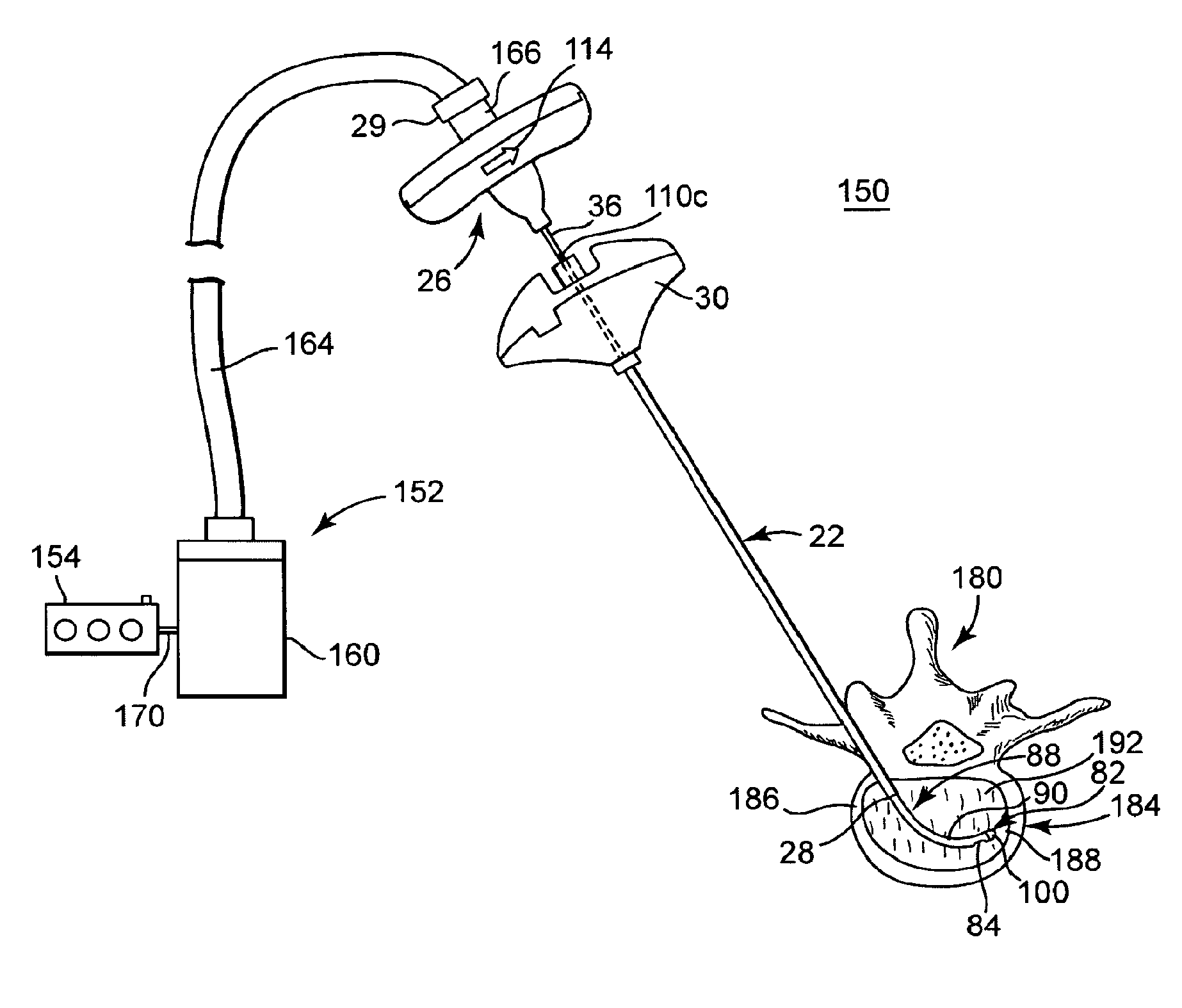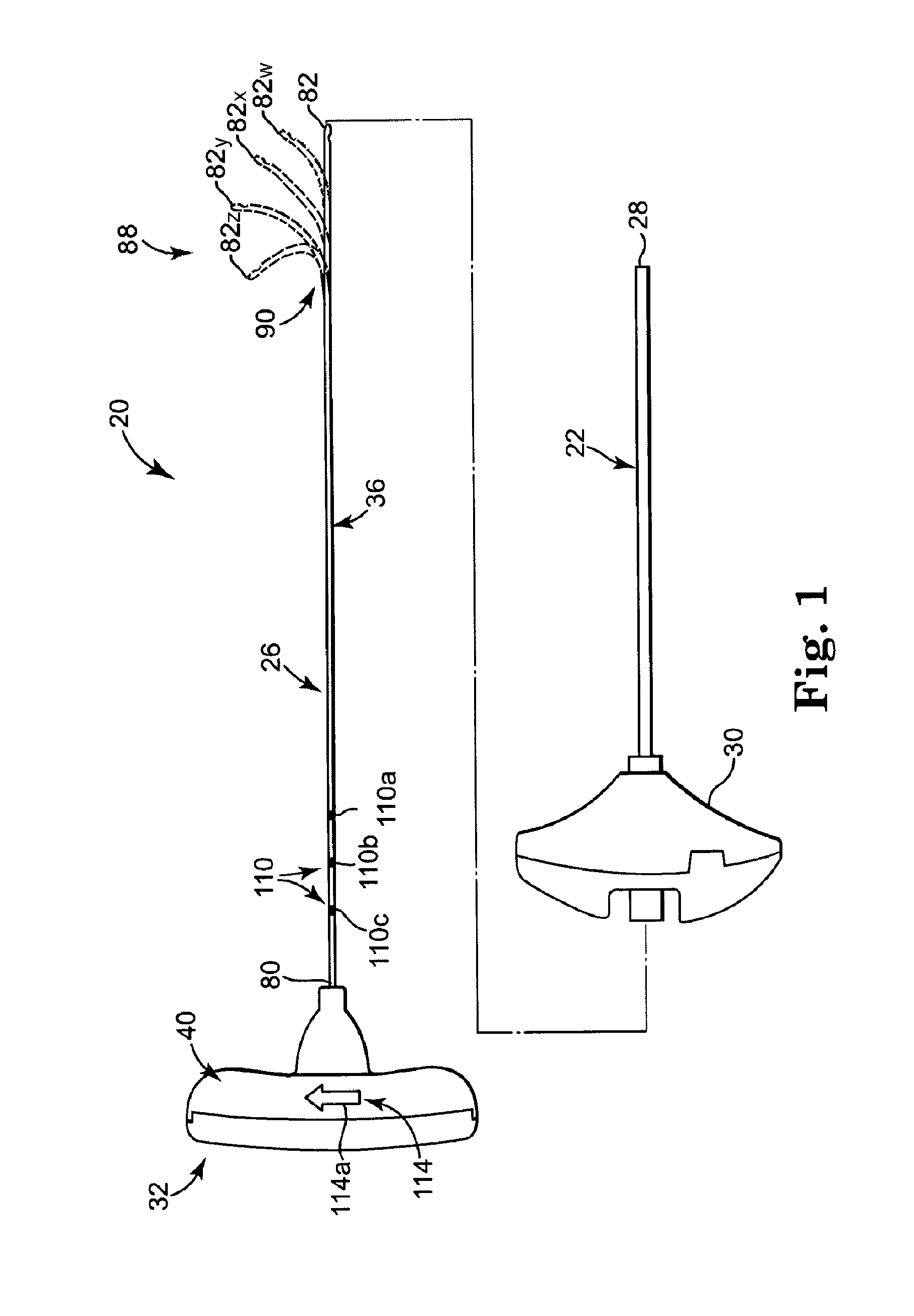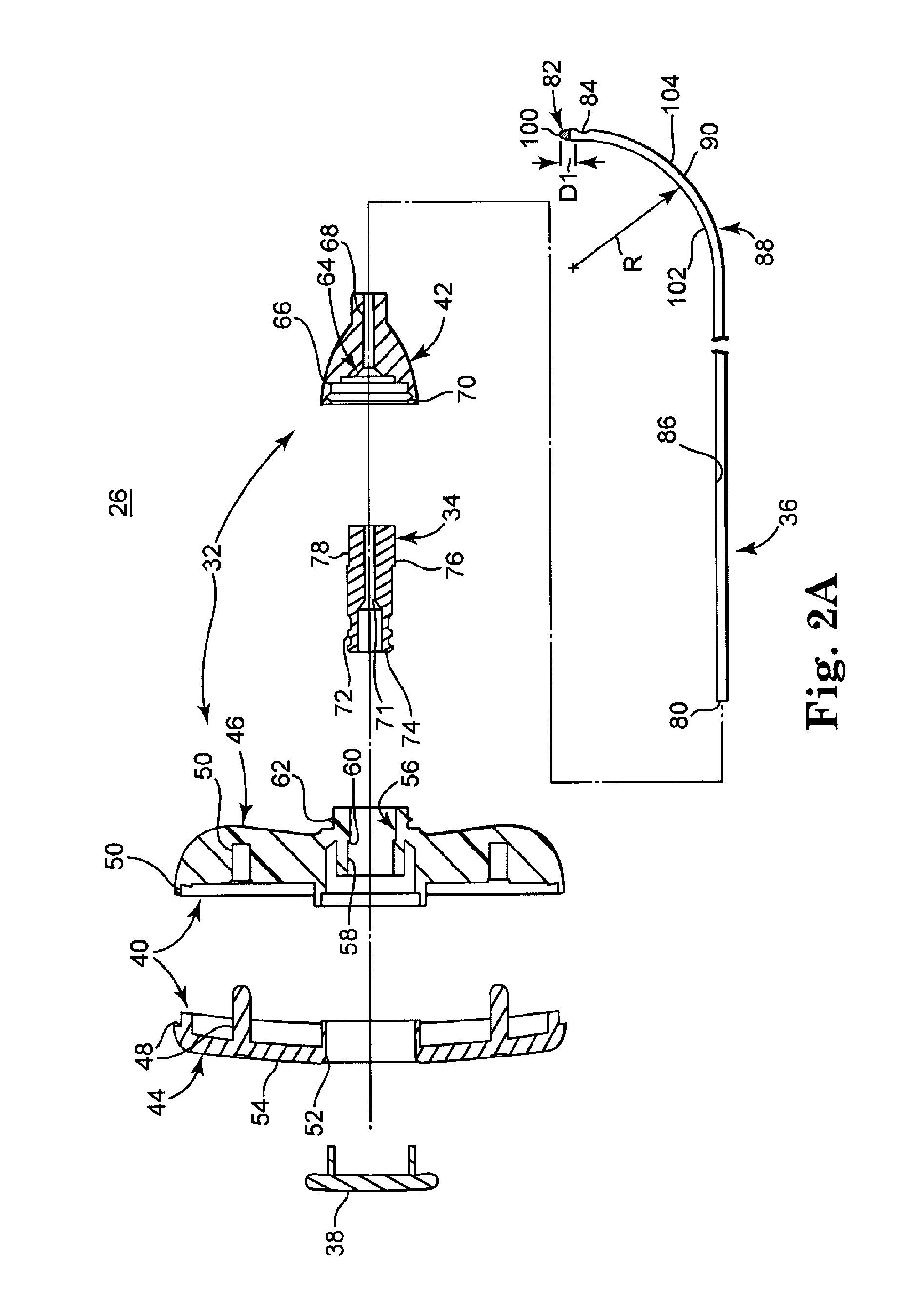Multistate-curvature device and method for delivering a curable material into bone
a multi-state curvature, bone structure technology, applied in the field of multi-state curvature devices and methods, can solve the problems of affecting the surgeon's ability to infuse all desired areas, the surgical site in question cannot be fully accessed using a conventional, straight needle cannula, and the risk of coring tissue is reduced, so as to reduce less time and effort, and the effect of reducing the risk of coring tissu
- Summary
- Abstract
- Description
- Claims
- Application Information
AI Technical Summary
Benefits of technology
Problems solved by technology
Method used
Image
Examples
Embodiment Construction
[0039]FIG. 1 illustrates components of an intraosseous, curable material delivery system 20. The system 20 includes an outer guide cannula 22 and a delivery cannula device 26 (referenced generally). Details on the various components are provided below. In general terms, however, a portion of the delivery cannula device 26 is sized to be slidably disposed within the guide cannula 22 that otherwise serves to form and / or locate a desired delivery site within bone. After it is positioned through the guide cannula lumen, the delivery cannula device 26 may be employed to inject a curable, bone stabilizing material into the delivery site. The system 20 can be used for a number of different procedures, including, for example, vertebroplasty and other bone augmentation procedures in which curable material is delivered to a site within bone, as well as to remove or aspirate material from a site within bone.
[0040]The system 20, and in particular the delivery cannula device 26, is highly useful...
PUM
 Login to View More
Login to View More Abstract
Description
Claims
Application Information
 Login to View More
Login to View More - R&D
- Intellectual Property
- Life Sciences
- Materials
- Tech Scout
- Unparalleled Data Quality
- Higher Quality Content
- 60% Fewer Hallucinations
Browse by: Latest US Patents, China's latest patents, Technical Efficacy Thesaurus, Application Domain, Technology Topic, Popular Technical Reports.
© 2025 PatSnap. All rights reserved.Legal|Privacy policy|Modern Slavery Act Transparency Statement|Sitemap|About US| Contact US: help@patsnap.com



